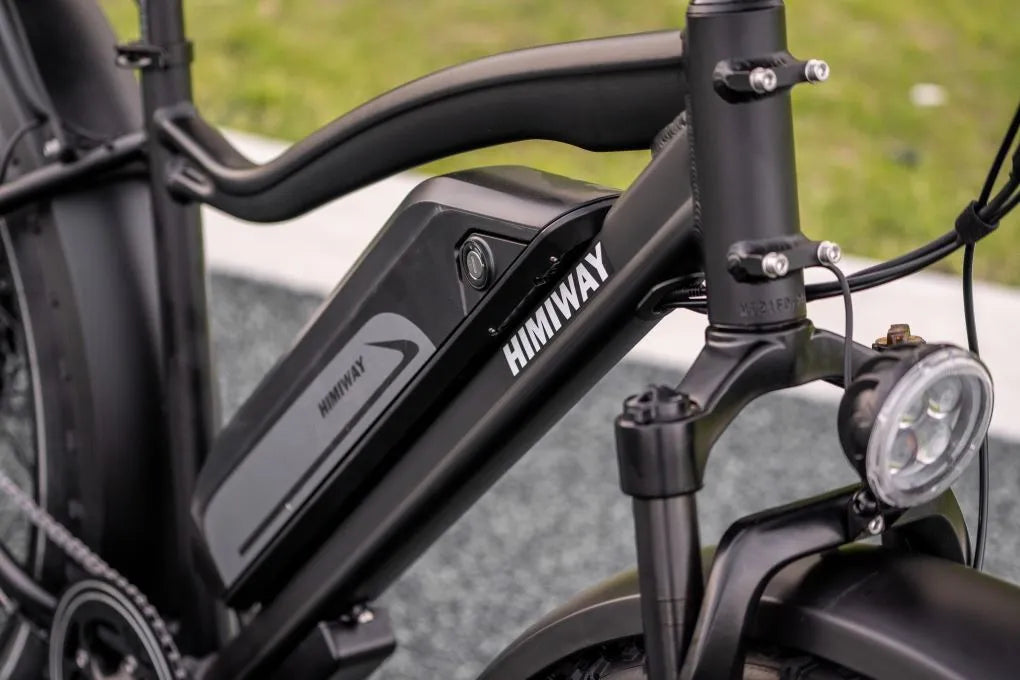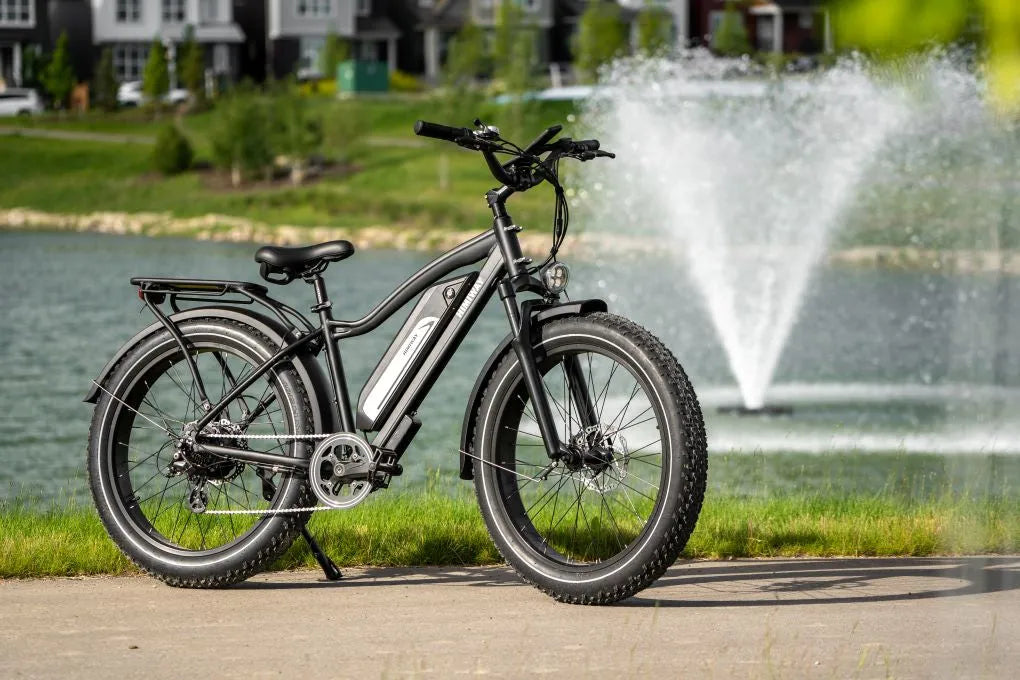Tan lines, warm weather, and long days can only mean one thing: it’s summer 2022! Many people living in the Northern Hemisphere are currently enjoying everything summer has to offer. Barbecues, beaches, and bike rides are top of mind right now. If you’ve been making the most of your summer, you’ll likely be getting plenty of use out of your e-bike, too!
Just like us falling asleep quickly after a long day of exercise and fun in the sun, e-bike batteries need to take a break and recharge from time to time, too. After riding all day, they may need to be plugged in to prepare for your next ride. There’s no worse feeling than preparing for a big trip on your electric bike only to wake up and realize you forgot to charge your e-bike battery overnight!
But there are risks to charging your battery incorrectly, especially during summer. We’ve collected seven of the most common safety hazards while charging your e-bike and listed them here for your protection. Keep your battery in excellent condition and extend the life as long as possible by avoiding these hazards:

Hazard #1. Charging Your Battery in Direct Sunlight
Sometimes we plug our battery in and lean the bike up against a tree or outside the garage and forget about it. That’s fine overnight (although a dry, covered location is best), but don’t forget about your bike when the sun comes up! Leaving your bike charging in direct heat and sunlight can be a death sentence for lithium-ion batteries.
Batteries can short-circuit, overheat, or catch fire if they are exposed to too much heat. This extreme heat can melt internal plastic components and damage the battery management system, which is housed deep within the battery where you can’t see it. If you can’t put your bike in a shaded or covered area to charge, take the battery off and charge it indoors where it is cooler. The battery is already heating up while it is charging, so don’t charge your battery in direct sunlight! Lesson number one.
Hazard #2. Riding in Extreme Heat with no Breaks
Lesson number two is to avoid riding your e-bike in extreme heat with few or no breaks. Not only is this bad for your body as it could lead to heat stroke, but it is bad for your battery for the same reasons as our very first hazard above. While the e-bike is running, the battery is warmer than when the bike is off. Combined with extreme temperatures found in the desert or on very hot pavement, the e-bike battery takes on severe strain and requires breaks to cool down. Most Himiway e-bikes can operate well within normal temperature ranges above 14 degrees Fahrenheit (ca. -10 °C) and below 100 degrees Fahrenheit (ca. 38 °C), but the best practice is to avoid long rides in extreme temperatures to protect your battery and motor.
Hazard # 3. Charging Immediately After a Long Ride
Our third hazard to avoid is charging your e-bike battery immediately after a long ride. Give the battery some time to cool down before plugging it in. You can set a reminder on your watch or phone to go back and charge the battery once it has had some time to take a break.
Hazard # 4. Using a Charger Not Made for Your E-bike
Another key hazard to avoid is using a third-party or aftermarket charger or charging cable. We cannot verify the integrity of the parts or the configurations of such a charger. This may cause the battery to overheat, smoke, or discharge while you are not paying attention. Make sure to only use an approved Himiway Bike charger purchased directly from Himiway Bike for your specific bike serial number.
Hazard # 5. Over-charging Your E-bike Battery
Leaving an e-bike battery on the charger for days and weeks on end may not seem like a big deal, but it is a huge risk to the quality of the battery. The problem is that the battery will cycle small amounts of power at the top end of the charge range (around 95-100%) back and forth over and over again. This additional strain on the battery will create poor charging cycles and may cause an issue with the longevity of your battery. Don’t over-charge your battery!

Hazard # 6. Storing Your E-bike in Hot or Humid Conditions
If you are going on a summer vacation or storing your bike for a while, don’t store it in a hot or humid location. The same goes for the battery. E-bike batteries like cool, dry locations where there is no risk of heat or moisture. Do not fully drain your battery. If battery power is not used for a long time, store the battery with a full charge and charge it once a month, but don’t leave it connected the entire time (see hazard # 5 above).
Hazard # 7. Charging Your E-bike Battery Underneath Other Items
It may seem innocent enough, but accidentally placing a towel or jacket over a charging e-bike battery is a recipe for disaster. This is hazardous because the battery will be heating up and if it is covered with cloth or other items, it could overheat and start a fire or cause damage to the internals of the battery. Similarly, you do not want to charge your battery near children or near sleeping quarters. Blankets may fall onto the battery and pose this risk. Don’t charge your e-bike battery in tight conditions.
We’ve written plenty on the maintenance and performance of our long-range electric bikes. These guides are meant to serve as a helpful collection of e-bike tips and tricks to improve your experience of e-biking, and this one is no different. Maximize your e-bike battery life by paying attention to the various hazards that may affect your e-bike battery.
Charge your battery in the shade, take breaks when riding in extreme heat, don’t charge immediately after a long ride or use a third-party charger, don’t overcharge your bike, and don’t store it or the battery in a hot place for too long. Finally, be aware of where you are charging your battery. By avoiding these seven hazards, you will lower the risk of damaging your e-bike and battery.














































